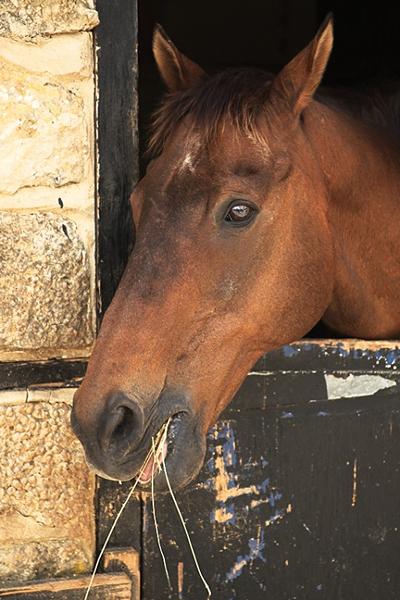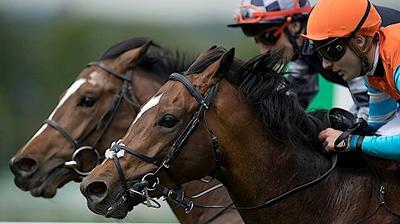Ultrasonic water stream reduce infection risk in horse and cattle feed hay

A NAMRIP-funded collaboration between the University of Southampton, Sloan Water Technology Ltd., and The Racehorse Sanctuary has identified the extent to which fitting ultrasonic nozzles to water stream can reduce the quantity of infectious agents on hay. Each year, such infections, and respiratory disease caused by dust and allergens on hay, cause problems for horse and farm animals. Traditional methods of reducing the hazard are not sufficient: soaking immerses the hay in water that might itself be a medium for bacterial and fungal prolife, and cause cross-contamination from one hay to another. Steaming is an option for those with access to electricity and the funds to pay for it, and the equipment. Both can affect the hay itself, and neither is directed actively removes the contaminant, relying on sterilization (for steaming) or passive floatation (soaking).
Rinsing under a water stream minimizes the effect on the hay, by avoiding the heat of steaming, and the prolonged soaking of immersion. The rinse action carries removed contaminant from the bath, reducing the risk of hay-to-jay cross-contamination. However it is not capable of removing many contaminants.

The research collaboration compared the efficiency of removal of infectives from hay, of a water stream through a patented nozzle that adds ultrasound and microscopic air bubbles, with the efficiency under identical conditions (the same water stream but without ultrasound and bubbles added).
The tests showed the ultrasonic nozzle was capable of removing infectives that would not be removed by a water stream alone. For example, with grass-like hay a water stream alone did not significantly reduce the contaminant content, whereas the ultrasonic stream removed around 90% of it.
Professor Leighton, the technology’s inventor and Chair of Global-NAMRIP, said “Ultrasonic streams offer the opportunity to clean hay either as a standalone method (when users lack the infrastructure or finances for soaking or steaming), or in conjunction with these (e.g. to remove clumps of microbes that would, if presented to steam, protect the innermost microbes from the steam). I am delighted that the two PhD students on the author list, Weng Yee Chong and Christian Cox, managed to get a result from fundamental science that could help livestock and their owners, in what is their first journal paper for both of them. You never forget your first paper, and they did extraordinarily well. We now hope to raise funds to conduct direct comparisons against, and in synergy with, commercial soaking and steaming equipment.”
Weng Yee Chong said “Animal feed safety is essential to the maintenance of livestock health and welfare, as consumption of contaminated feed can cause infectious diseases and this will have a negative impact on the equine and livestock industry. I am glad to be given the opportunity to take part in this exciting research together with my colleague, Christian Cox. It has been a fruitful experience for us to be able to apply our skills and knowledge to investigate ways to tackle a research problem.”

David Ray, Patron of The Racehorse Sanctuary, advised the team and supplied the hay. He commented “Feeding clean good quality hay is essential for the health and well-being of thoroughbred horses. The NAMRIP hay treatment promises to be a godsend for the lifetime welfare of our Sanctuary horses, especially those older ones who suffer from bronchitis or asthma. We believe this treatment will find favour with racehorse trainers, who work so hard to get their equine athletes to the top of their form.”
The citation for the journal paper is:
Chong, W. Y., Cox, C., Secker, T. J., Keevil, C. W. and Leighton, T. G. (2021) Improving livestock feed safety and infection prevention: Removal of bacterial contaminants from hay using cold water, bubbles and ultrasound. Ultrasonic Sonochemistry, 71, 105372 (6 pages) (doi:10.1016/j.ultsonch.2020.105372) (in press). (Dataset electronic archive to accompany this paper is at doi=10.5258/SOTON/D1331).